Gilles Peress est né en 1946 à Neuilly-sur-Seine. Il a étudié à l'Institut d'Etudes POlitiques à Paris puis à l'Université de Vincennes. Il rejoint Magnum Photos en 1972, il commence alors à documenter l'immigration en Europe. Ce travail prend la forme d'un cycle d'histoires documentaires décrivant l'intolérance et la réemergence du nationalisme depuis la Seconde Guerre Mondiale.
Actualité Aperture magazine Summer 2008 in Aperture Concours Appel à candidatures : Prix Bayeux des correspondants de guerre, 2012 Livre « Access to Life » : la mission donnée à 8 photographes de l'agence Magnum Livre MAGNUM MAGNUM, les photographes de l'agence se commentent en duos Livre Darkside, Vol. 2: Photographic Power and Photographed Violence, Disease and Death Exposition THIS PLACE, The complexity of Israel Exposition Les désastres de la guerre 1800-2014 Exposition Fotomuseum WestLicht presents « In Our Time » Exposition Les photographes du New York Times Magazine à FOAM Exposition The New York Times Magazine Photographs at the FOAM Exposition l'Ombre de la guerre - Maison Européenne de la Photographie Exposition Antiphotojournalism at FOAM Exposition Notre histoire - 15eme anniversaire du Centre André Malraux Exposition Scenes and Traces of a Fall. The Berlin Wall in the eyes of photographers Exposition DARK SIDE 2 - Photographic Power and Violence, Disease and Death Photographed Modifier l'image
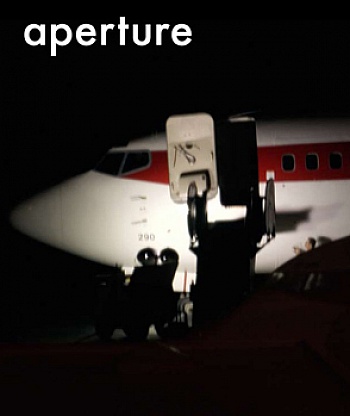 • Sophie Calle: A Lover’s Monologue
Giuseppe Merlino considers Calle’s recent project Prenez soin de vous (Take Care of Yourself), exhibited at last year’s Venice Biennale.
• The Films of Robert Frank
Luc Sante discusses Frank’s films Pull My Daisy, The Sin of Jesus, and Me and My Brother.
• Disappearances: The Photographs of Trevor Paglen
Paglen’s work with photography and other media confronts the shadowy world of covert American military programs.
• How Silent Images Can Break the Silence
Through words, photographs, and an extraordinary exhibition, Gilles Peress and John Berger express their responses to Picasso’s Guernica.
• Jane Hammond’s Recombinant DNA
Although known for her paintings and prints, Hammond has produced a series of t...
• Sophie Calle: A Lover’s Monologue
Giuseppe Merlino considers Calle’s recent project Prenez soin de vous (Take Care of Yourself), exhibited at last year’s Venice Biennale.
• The Films of Robert Frank
Luc Sante discusses Frank’s films Pull My Daisy, The Sin of Jesus, and Me and My Brother.
• Disappearances: The Photographs of Trevor Paglen
Paglen’s work with photography and other media confronts the shadowy world of covert American military programs.
• How Silent Images Can Break the Silence
Through words, photographs, and an extraordinary exhibition, Gilles Peress and John Berger express their responses to Picasso’s Guernica.
• Jane Hammond’s Recombinant DNA
Although known for her paintings and prints, Hammond has produced a series of t...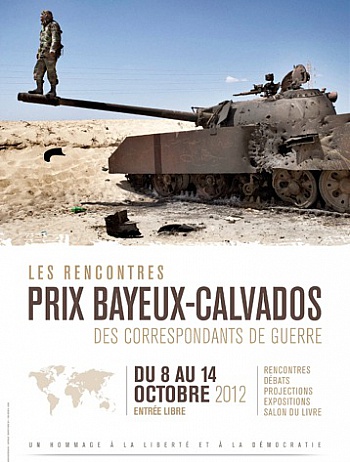 Journalistes : envoyez vos reportages dès maintenant et jusqu'au 8 juin
Les reportages photo, radio, télévision et presse écrite traitant d'une situation de conflit ou d’un fait d’actualité concernant la défense des libertés et de la démocratie doivent être envoyés avant le 8 juin prochain en vue de la sélection 2012. Ils doivent avoir été réalisés entre le 1er juin 2011 et le 31 mai 2012, et concourent chacun pour une dotation de 7000 €.
Pour la nouvelle catégorie web journalisme créée en 2011 grâce au soutien de Nikon, le reportage multimédia doit avoir été diffusé sur Internet ou sur tablette tactile entre le 1er juin 20...
Journalistes : envoyez vos reportages dès maintenant et jusqu'au 8 juin
Les reportages photo, radio, télévision et presse écrite traitant d'une situation de conflit ou d’un fait d’actualité concernant la défense des libertés et de la démocratie doivent être envoyés avant le 8 juin prochain en vue de la sélection 2012. Ils doivent avoir été réalisés entre le 1er juin 2011 et le 31 mai 2012, et concourent chacun pour une dotation de 7000 €.
Pour la nouvelle catégorie web journalisme créée en 2011 grâce au soutien de Nikon, le reportage multimédia doit avoir été diffusé sur Internet ou sur tablette tactile entre le 1er juin 20...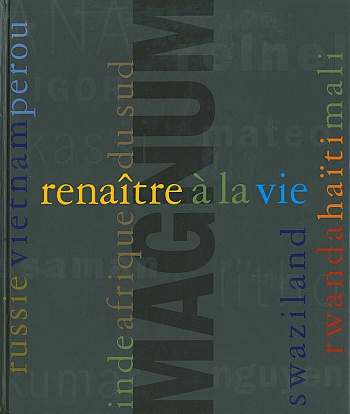 Le point de départ de ce projet est le Fonds Mondial de la lutte contre le Sida. Il a été mis en place afin de sensibiliser les institutions comme le grand public des ravages du virus du sida, et des moyens nécessaires à son éviction.
Mali © Paolo Pellegrin
De ce fait, 8 grands photographes de Magnum ont sillonnés 9 pays pour témoigner des conséquences de cette maladie. De ses ravages, certes, mais pas seulement. L'ouvrage montre également certains cas de patients affectés par le sida, et qui, grâce au traitement, parviennent à survivre, et parfois même à s'en sortir malgré tout. L'introduction, rédigée par le Fonds Mondial, explicite clairem...
Le point de départ de ce projet est le Fonds Mondial de la lutte contre le Sida. Il a été mis en place afin de sensibiliser les institutions comme le grand public des ravages du virus du sida, et des moyens nécessaires à son éviction.
Mali © Paolo Pellegrin
De ce fait, 8 grands photographes de Magnum ont sillonnés 9 pays pour témoigner des conséquences de cette maladie. De ses ravages, certes, mais pas seulement. L'ouvrage montre également certains cas de patients affectés par le sida, et qui, grâce au traitement, parviennent à survivre, et parfois même à s'en sortir malgré tout. L'introduction, rédigée par le Fonds Mondial, explicite clairem...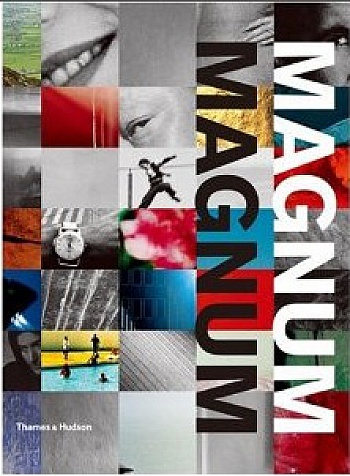 Réédité en « Petit Format », l'ouvrage Magnum Magnum était déjà paru en 2007. Ce livre retrace le travail des grands maîtres de la photographie du XXe siècle, des grands photographes actuels et des nouveaux talents de l'agence de photographes la plus connue du monde. 400 images iconiques des 60 dernières années ont été ici sélectionnées et commentées par les 69 photographes de Magnum. Ainsi, entre autres duos le travail d'Henri Cartier-Bresson est décrit par Eve Arnold, celui de Martin Franck par Ferdinando Scianna. L'oeuvre de Martin Parr est commenté par René Burri et l'oeuvre d'Alex Webb est détaillé par Chris Steele-Perkins.
Ma...
Réédité en « Petit Format », l'ouvrage Magnum Magnum était déjà paru en 2007. Ce livre retrace le travail des grands maîtres de la photographie du XXe siècle, des grands photographes actuels et des nouveaux talents de l'agence de photographes la plus connue du monde. 400 images iconiques des 60 dernières années ont été ici sélectionnées et commentées par les 69 photographes de Magnum. Ainsi, entre autres duos le travail d'Henri Cartier-Bresson est décrit par Eve Arnold, celui de Martin Franck par Ferdinando Scianna. L'oeuvre de Martin Parr est commenté par René Burri et l'oeuvre d'Alex Webb est détaillé par Chris Steele-Perkins.
Ma...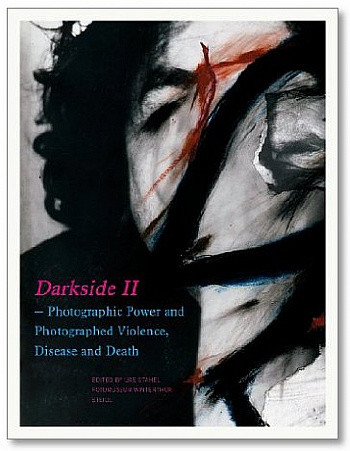 Following the survey of photographed sexuality and lust in Darkside I, the other end of the physical spectrum is illuminated: the intimate affinity between death and photography – impairment, disease, degeneration, violence and death, pain, grief and loss. Recording death is, along with war reporting, one of photography’s original tasks. Pictures of horror are often shocking and yet “bestselling”. They provoke questions about exploitation, complicity and power relationships – infront of and behind the camera and in the photograph itself. Photography often provokes accusations that it aestheticizes misery, creating a “pornography of horror”. Enlightenment quickly turns into transfiguration, photographic enlightenment into commerce. Darkside I and II examine Eros and Thanatos in pi...
Following the survey of photographed sexuality and lust in Darkside I, the other end of the physical spectrum is illuminated: the intimate affinity between death and photography – impairment, disease, degeneration, violence and death, pain, grief and loss. Recording death is, along with war reporting, one of photography’s original tasks. Pictures of horror are often shocking and yet “bestselling”. They provoke questions about exploitation, complicity and power relationships – infront of and behind the camera and in the photograph itself. Photography often provokes accusations that it aestheticizes misery, creating a “pornography of horror”. Enlightenment quickly turns into transfiguration, photographic enlightenment into commerce. Darkside I and II examine Eros and Thanatos in pi... The complexity of Israel and the West Bank through the eyes of twelve internationally acclaimed photographers.
THIS PLACE
is a monumental artistic endeavor initiated by photographer Frederic Brenner, who believes that only through the eyes of great artists can we begin to understand the complexities of Israel – its history, its geography, its inhabitants, its daily life – and the resonance it has for people around the world.
Inspired by historical models that gathered artists to ask essential questions about culture, society and individuals, including the Mission Héliographique in 19th-century France and the Farm Security Administration in the United States, Brenner first conceived the idea for the project in 2006. After seeking the advice of a group of international curators, he invited eleven ...
The complexity of Israel and the West Bank through the eyes of twelve internationally acclaimed photographers.
THIS PLACE
is a monumental artistic endeavor initiated by photographer Frederic Brenner, who believes that only through the eyes of great artists can we begin to understand the complexities of Israel – its history, its geography, its inhabitants, its daily life – and the resonance it has for people around the world.
Inspired by historical models that gathered artists to ask essential questions about culture, society and individuals, including the Mission Héliographique in 19th-century France and the Farm Security Administration in the United States, Brenner first conceived the idea for the project in 2006. After seeking the advice of a group of international curators, he invited eleven ...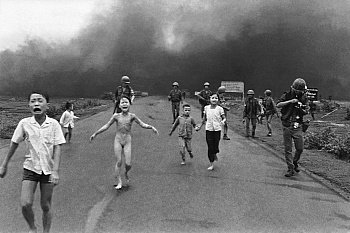 Pourquoi préférons-nous la paix à la guerre ?
Cette exposition nous invite à le comprendre. Elle montre en quoi les artistes ont contribué au mouvement de désenchantement face à la guerre, qui s’amorce au début du 19e siècle, lors des campagnes napoléoniennes.
Depuis toujours placée au centre des valeurs de la société, la guerre comme épisode inévitable allait de moins en moins faire consensus. Après les campagnes napoléoniennes, en 1819, Benjamin Constant pouvait écrire : « Chez les modernes, une guerre heureuse coûte infailliblement plus qu’elle ne rapporte ».
Alors que l’art était depuis toujours dominé par la bataille héroïque, la guerre fut alors de plus en plus représentée sous toutes ses faces, y compris ses conséquenc...
Pourquoi préférons-nous la paix à la guerre ?
Cette exposition nous invite à le comprendre. Elle montre en quoi les artistes ont contribué au mouvement de désenchantement face à la guerre, qui s’amorce au début du 19e siècle, lors des campagnes napoléoniennes.
Depuis toujours placée au centre des valeurs de la société, la guerre comme épisode inévitable allait de moins en moins faire consensus. Après les campagnes napoléoniennes, en 1819, Benjamin Constant pouvait écrire : « Chez les modernes, une guerre heureuse coûte infailliblement plus qu’elle ne rapporte ».
Alors que l’art était depuis toujours dominé par la bataille héroïque, la guerre fut alors de plus en plus représentée sous toutes ses faces, y compris ses conséquenc...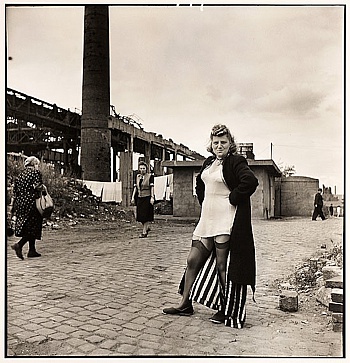 Until today Magnum stands for documentary photography of the highest standard. Robert Capa, Henri Cartier-Bresson, George Rodger and David Seymour (Chim) founded the legendary photo agency in 1947, with the aim to work independently in a motivated cooperative of likeminded photographers - as reporters, commentators and poets with a camera. The decisive moment and Human Interest became the central paradigms of this group.
The exhibition IN OUR TIME opens a time window to the first forty years of Magnum with photographs of the five initiators and fifty other members, such as Werner Bischof, Ernst Haas, Erich Lessing, Eve Arnold, Marc Riboud, Elliott Erwitt, Inge Morath, René Burri, Bruce Davidson, Constantine Manos, Burk Uzzle, Hiroji Kubota, Bruno Barbey, Josef Koudelka, Gilles Peress, Mary Ellen Mark, Susa...
Until today Magnum stands for documentary photography of the highest standard. Robert Capa, Henri Cartier-Bresson, George Rodger and David Seymour (Chim) founded the legendary photo agency in 1947, with the aim to work independently in a motivated cooperative of likeminded photographers - as reporters, commentators and poets with a camera. The decisive moment and Human Interest became the central paradigms of this group.
The exhibition IN OUR TIME opens a time window to the first forty years of Magnum with photographs of the five initiators and fifty other members, such as Werner Bischof, Ernst Haas, Erich Lessing, Eve Arnold, Marc Riboud, Elliott Erwitt, Inge Morath, René Burri, Bruce Davidson, Constantine Manos, Burk Uzzle, Hiroji Kubota, Bruno Barbey, Josef Koudelka, Gilles Peress, Mary Ellen Mark, Susa...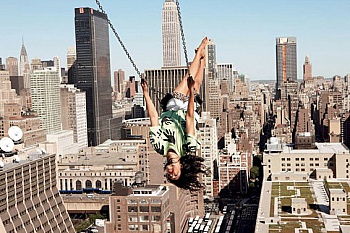 For over thirty years, the New York Times Magazine has presented the myriad possibilities and applications of photography. The New York Times Magazine Photographs is an exhibition that reflects upon and interrogates the very nature of both photography and print magazines at this pivotal moment in their history and evolution.
The exhibition is cocurated by Kathy Ryan, longtime Photo Editor of the Magazine, and Lesley A. Martin, Publisher of Aperture Books. The Aperture-produced exhibition is comprised of eleven individual modules, each of which focuses on a notable project or series of projects that have been presented in the pages of the Magazine.
The featured projects mirror the Magazine's eclecticism, presenting seminal examples of reportage, portraiture, as well as fine art photography. Using visual ...
For over thirty years, the New York Times Magazine has presented the myriad possibilities and applications of photography. The New York Times Magazine Photographs is an exhibition that reflects upon and interrogates the very nature of both photography and print magazines at this pivotal moment in their history and evolution.
The exhibition is cocurated by Kathy Ryan, longtime Photo Editor of the Magazine, and Lesley A. Martin, Publisher of Aperture Books. The Aperture-produced exhibition is comprised of eleven individual modules, each of which focuses on a notable project or series of projects that have been presented in the pages of the Magazine.
The featured projects mirror the Magazine's eclecticism, presenting seminal examples of reportage, portraiture, as well as fine art photography. Using visual ...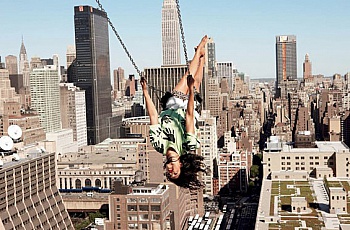 For over thirty years, the New York Times Magazine has presented the myriad possibilities and applications of photography. The New York Times Magazine Photographs is an exhibition that reflects upon and interrogates the very nature of both photography and print magazines at this pivotal moment in their history and evolution.
The exhibition is cocurated by Kathy Ryan, longtime Photo Editor of the Magazine, and Lesley A. Martin, Publisher of Aperture Books. The Aperture-produced exhibition is comprised of eleven individual modules, each of which focuses on a notable project or series of projects that have been presented in the pages of the Magazine. The featured projects mirror the Magazine’s eclecticism, presenting seminal examples of reportage, portraiture, as well as fine art photography. Using visual mate...
For over thirty years, the New York Times Magazine has presented the myriad possibilities and applications of photography. The New York Times Magazine Photographs is an exhibition that reflects upon and interrogates the very nature of both photography and print magazines at this pivotal moment in their history and evolution.
The exhibition is cocurated by Kathy Ryan, longtime Photo Editor of the Magazine, and Lesley A. Martin, Publisher of Aperture Books. The Aperture-produced exhibition is comprised of eleven individual modules, each of which focuses on a notable project or series of projects that have been presented in the pages of the Magazine. The featured projects mirror the Magazine’s eclecticism, presenting seminal examples of reportage, portraiture, as well as fine art photography. Using visual mate...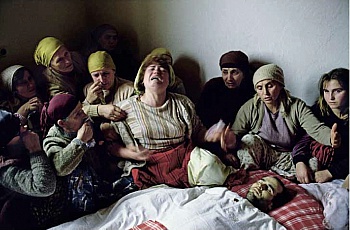 La Maison européenne de la photographie présente, cet été, L’ombre de la guerre, exposition organisée par Contrasto, dans le cadre du projet Science for Peace de la Fondation Veronesi. Umberto Veronesi, son fondateur, s’est assuré le concours de scientifiques, de personnalités internationales du monde de la culture et de divers prix Nobel.
Bien qu’iconiques, ces images, afin d’en saisir tous les enjeux, sont accompagnées d’un texte qui retrace le contexte de la prise de vue, auquel s’ajoute une série de données chiffrées démontrant l’impact des guerres sur nos sociétés. Cette exposition permet ainsi de traiter différemment de l’histoire, il est certes question de ...
La Maison européenne de la photographie présente, cet été, L’ombre de la guerre, exposition organisée par Contrasto, dans le cadre du projet Science for Peace de la Fondation Veronesi. Umberto Veronesi, son fondateur, s’est assuré le concours de scientifiques, de personnalités internationales du monde de la culture et de divers prix Nobel.
Bien qu’iconiques, ces images, afin d’en saisir tous les enjeux, sont accompagnées d’un texte qui retrace le contexte de la prise de vue, auquel s’ajoute une série de données chiffrées démontrant l’impact des guerres sur nos sociétés. Cette exposition permet ainsi de traiter différemment de l’histoire, il est certes question de ...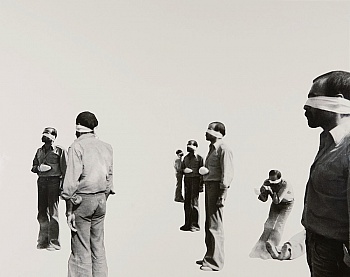 Photojournalism is in the midst of a remarkable, and singularly unexpected, renaissance. New practices, strategies, viewpoints, techniques, and agents have radically transformed the institutions and the fundamental concepts of the field. Whilst it has become fashionable to lament the death of photojournalism, actual events suggest that something quite different is taking place. The group exhibition Antiphotojournalism charts these new developments in exciting ways.
Included is work by Broomberg & Chanarin, Mauro Andrizzi, Jonathan Cavender, Robbie Wright, Shane McDonald, Hito Steyerl, Ariella Azoulay, Paul Lowe, Goran Galic & Gian-Reto Gredig, Laura Kurgan, Renzo Martens, Kadir van Lohuizen, Allan Sekula, Phil Collins, Walid Raad/The Atlas Group, Paul Fusco, Gilles Peress and Susan Meiselas. Compilations b...
Photojournalism is in the midst of a remarkable, and singularly unexpected, renaissance. New practices, strategies, viewpoints, techniques, and agents have radically transformed the institutions and the fundamental concepts of the field. Whilst it has become fashionable to lament the death of photojournalism, actual events suggest that something quite different is taking place. The group exhibition Antiphotojournalism charts these new developments in exciting ways.
Included is work by Broomberg & Chanarin, Mauro Andrizzi, Jonathan Cavender, Robbie Wright, Shane McDonald, Hito Steyerl, Ariella Azoulay, Paul Lowe, Goran Galic & Gian-Reto Gredig, Laura Kurgan, Renzo Martens, Kadir van Lohuizen, Allan Sekula, Phil Collins, Walid Raad/The Atlas Group, Paul Fusco, Gilles Peress and Susan Meiselas. Compilations b... «Les idées ne sont pas faites pour être pensées, mais vécues» André Malraux
Depuis 1994, année de sa création pendant le siège de Sarajevo sous le parrainage emblématique d’André Malraux, de nombreux artistes, écrivains, cinéastes, photographes, traducteurs soutiennent le centre André Malraux de Sarajevo et son directeur, Francis Bueb. Ils ont été nombreux à faire le voyage pour exprimer leur soutien, pour accompagner son engagement intellectuel et moral, pour honorer la présence culturelle française en Bosnie-Herzégovine.
En 2004, pour ses dix ans, le centre Georges Pompidou rendait hommage à ce lieu de résistance et de rencontres. Un an plus tôt, Jea...
«Les idées ne sont pas faites pour être pensées, mais vécues» André Malraux
Depuis 1994, année de sa création pendant le siège de Sarajevo sous le parrainage emblématique d’André Malraux, de nombreux artistes, écrivains, cinéastes, photographes, traducteurs soutiennent le centre André Malraux de Sarajevo et son directeur, Francis Bueb. Ils ont été nombreux à faire le voyage pour exprimer leur soutien, pour accompagner son engagement intellectuel et moral, pour honorer la présence culturelle française en Bosnie-Herzégovine.
En 2004, pour ses dix ans, le centre Georges Pompidou rendait hommage à ce lieu de résistance et de rencontres. Un an plus tôt, Jea...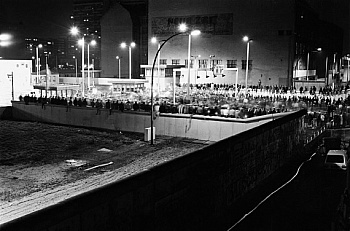 An exhibition by the Foundation Brandenburger Tor organized by Matthias Harder
On October 3, 2009, the Day of German Unity, and on occasion of the 20th anniversary of the fall of the Berlin Wall, the Foundation Brandenburger Tor in the Max Liebermann House will open the exhibition 'Szenen und Spuren eines Falls. Die Berliner Mauer im Fokus der Photographen' (Scenes and Traces of a Fall. The Berlin Wall in the eyes of photographers). This historical change is presented in an individual and, at the same time, exemplary manner in 140 works by 21 renowned photographers. The Foundation Brandenburger Tor has its seat directly adjacent to Germany' s national monument. For the Foundation it is both an opportunity and an obligation to document the fall of the Berlin Wall exactly here at this place, which formed the centre of e...
An exhibition by the Foundation Brandenburger Tor organized by Matthias Harder
On October 3, 2009, the Day of German Unity, and on occasion of the 20th anniversary of the fall of the Berlin Wall, the Foundation Brandenburger Tor in the Max Liebermann House will open the exhibition 'Szenen und Spuren eines Falls. Die Berliner Mauer im Fokus der Photographen' (Scenes and Traces of a Fall. The Berlin Wall in the eyes of photographers). This historical change is presented in an individual and, at the same time, exemplary manner in 140 works by 21 renowned photographers. The Foundation Brandenburger Tor has its seat directly adjacent to Germany' s national monument. For the Foundation it is both an opportunity and an obligation to document the fall of the Berlin Wall exactly here at this place, which formed the centre of e... Following the investigation of photographed sexuality and desire in Darkside I, Fotomuseum Winterthur focuses now on the other extreme of the bodily spectrum, charting the path from the body as a veritable ‘picture of health’ to the body injured, disfigured or mutilated, in decline and decay. This raises questions: Why is there an intimate affinity between photography and death? Why does violence attract images? The visual world of western culture is full of images of violence – both random outbursts of violence and military violence, regulative state violence. In a strange reversal, societies have shut away images of life-affirming, life-giving sexuality, banishing them to the fringes of obscurity, whereas images of dark and excessive violence have been brought into the light. The reasons for this are ...
Following the investigation of photographed sexuality and desire in Darkside I, Fotomuseum Winterthur focuses now on the other extreme of the bodily spectrum, charting the path from the body as a veritable ‘picture of health’ to the body injured, disfigured or mutilated, in decline and decay. This raises questions: Why is there an intimate affinity between photography and death? Why does violence attract images? The visual world of western culture is full of images of violence – both random outbursts of violence and military violence, regulative state violence. In a strange reversal, societies have shut away images of life-affirming, life-giving sexuality, banishing them to the fringes of obscurity, whereas images of dark and excessive violence have been brought into the light. The reasons for this are ...